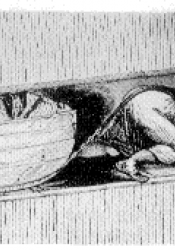Cornwall
Cornwall, a county located in South West England, is an area famous for its abundance of rare metals and natural resources held underground. As a result it became a prime location for large industrial entities to take root and establish numerous mining operations during the early 1840’s . Unfortunately, like many mining operations throughout the country Cornish mines were infamous for their poor working conditions and exploitation of child labour. This location is of particular importance because it is one of the known mining locations visited by author Charles Dickens. Dickens was so outraged by the working conditions in these mines that he wrote a letter to The Morning Chronicle, a popular newspaper outlet at the time, demanding reform on behalf of the workers. Ultimately legislation was passed banning the employment of children under the age of ten underground and Dickens is now credited as being a staunch advocate of workers rights in the industrial era.
Parent Map
Coordinates
Longitude: -5.052712500000

